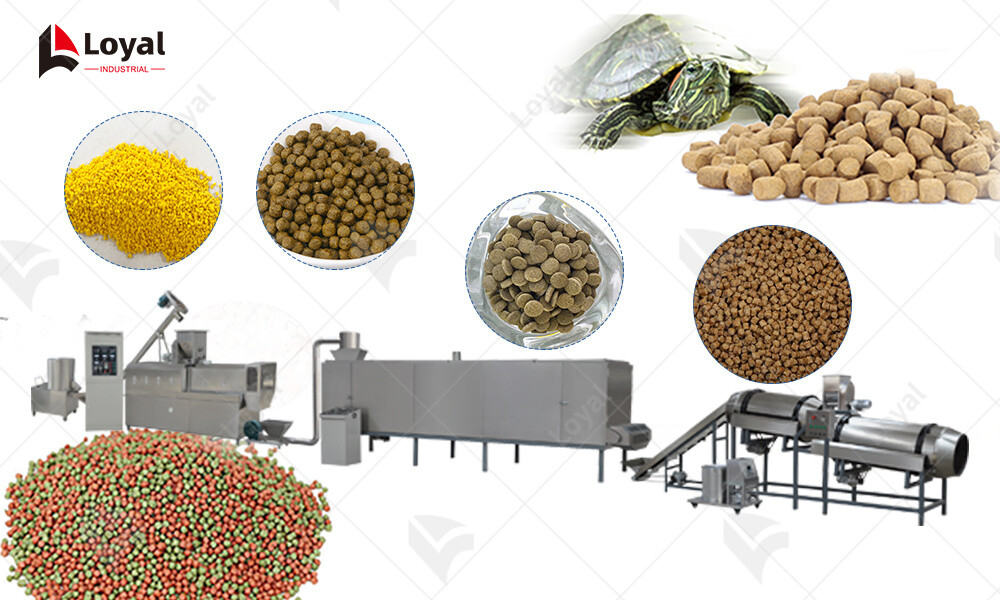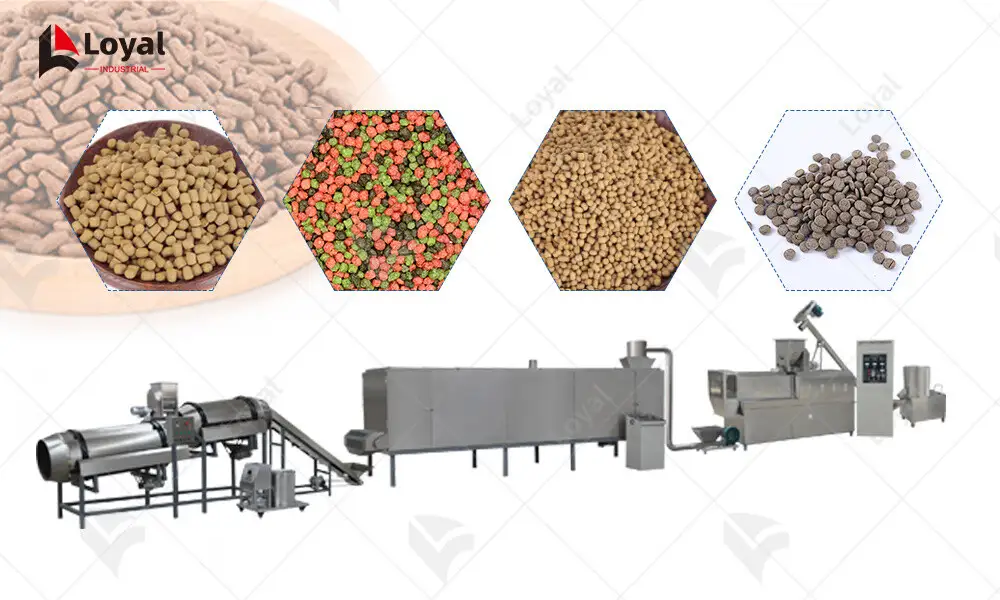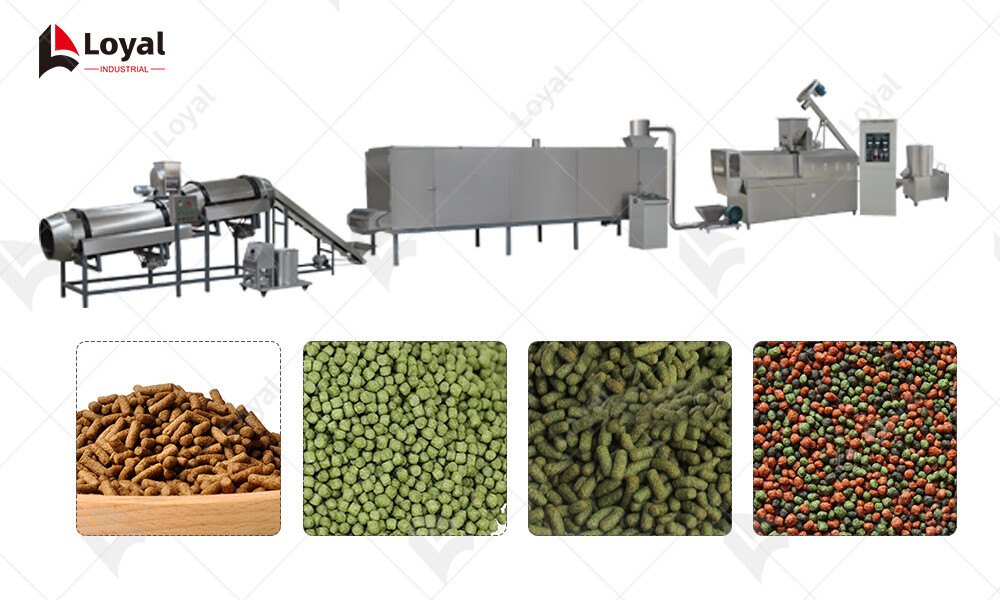Fish Feed Machine For Sale Manufacturers: How Comprehensive Guide To Selecting The Ideal Manufacture
Introduction to Aquaculture and the Importance of Fish Feed Machines
Aquaculture, the farming of aquatic organisms such as fish, mollusks, crustaceans, and aquatic plants, has become a vital industry globally. It not only provides a sustainable source of protein but also supports livelihoods and economies worldwide. According to the Food and Agriculture Organization of the United Nations (FAO), aquaculture is the fastest-growing food production sector, outpacing traditional livestock farming.
Within this thriving industry, the role of fish feed machines cannot be overstated. Fish feed machines for sale are essential tools that automate the feeding process, ensuring that fish receive the nutritious diet they need to thrive. These machines significantly enhance the efficiency and productivity of aquaculture operations, making them indispensable for both small-scale farmers and large-scale commercial enterprises.
The precision and reliability of fish feed machines help maintain optimal feeding schedules, reducing waste and minimizing environmental impact. They also help farmers to monitor and control the feed intake of their fish, which is crucial for preventing overfeeding and underfeeding—both of which can lead to health issues and reduced growth rates.
In this article, we will delve into the key features of our top-quality fish feed machines for sale and explore how they can boost your aquaculture business. But first, let's understand why investing in a high-quality fish feed machine is essential for the success of your aquaculture operation.

Key Features of Our Top-Quality Fish Feed Machines for Sale
When it comes to selecting the right fish feed machine for your aquaculture business, there are several key features to consider. Our top-quality fish feed machines for sale excel in these areas, providing you with a robust, reliable, and efficient feeding solution.
Precision and Control:Our machines offer precise control over the feeding process, allowing you to set specific feeding schedules and quantities. This ensures that your fish receive the right amount of feed at the optimal times, promoting healthy growth and minimizing waste.
Customization:We understand that every aquaculture operation is unique. Therefore, our fish feed machines come with customizable options that cater to your specific needs. Whether you need to adjust the feed particle size, feed rate, or feeding intervals, our machines can be tailored to meet your requirements.
Durability and Reliability:Built with high-quality materials and advanced engineering, our fish feed machines are designed to withstand the rigors of daily use. They are durable, reliable, and require minimal maintenance, ensuring that they remain operational for years to come.
Energy Efficiency:Our fish feed machines are designed with energy efficiency in mind. They consume less power while delivering optimal performance, helping you to reduce your operational costs and carbon footprint.
User-Friendly Operation:Ease of use is another hallmark of our fish feed machines. They come with intuitive controls and user-friendly interfaces, making them accessible to both experienced farmers and newcomers to the industry.
As stated by Dr. Edward Allen, an aquaculture expert at a leading university, "Investing in a high-quality fish feed machine is crucial for the success of any aquaculture operation. It not only enhances productivity but also helps to minimize waste and environmental impact." Our machines embody these principles, providing you with a reliable and efficient feeding solution that supports the growth and sustainability of your aquaculture business.

How a Top-Quality Fish Feed Machine Can Boost Your Aquaculture Business
A top-quality fish feed machine can have a significant impact on the productivity and profitability of your aquaculture business. Here are some ways in which our fish feed machines can help you boost your operations:
Increased Efficiency:Automated fish feed machines streamline the feeding process, reducing the time and labor required to manage feedings. This allows you to focus on other critical aspects of your business, such as monitoring fish health and managing water quality.
Optimized Feed Utilization:Our machines ensure that feed is delivered to the fish in a controlled and precise manner, minimizing waste and optimizing feed utilization. This not only reduces your feed costs but also helps to maintain water quality by preventing excess nutrients from entering the system.
Enhanced Fish Growth:Proper feeding schedules and quantities are crucial for the healthy growth of fish. Our fish feed machines help you to maintain these optimal conditions, leading to faster growth rates and improved fish quality.
Scalability:As your aquaculture business grows, so too will your feeding needs. Our fish feed machines are scalable and can be easily adapted to accommodate larger operations. This ensures that you can continue to benefit from their efficiency and reliability as your business expands.
Sustainability:By minimizing waste and optimizing feed utilization, our fish feed machines contribute to the sustainability of your aquaculture business. They help you to reduce your environmental impact and meet the growing consumer demand for responsibly sourced seafood.
In the words of Dr. Rachel Carson, a renowned environmentalist, "The proper study of mankind is man." Similarly, the proper study of aquaculture is the optimization of its processes, and our fish feed machines are a critical component of this optimization. By investing in a top-quality fish feed machine, you can enhance the efficiency, productivity, and sustainability of your aquaculture business, setting the stage for long-term success.

Comparing Different Types of Fish Feed Machines: Which One is Right for Your Aquaculture Operation?
When it comes to selecting a fish feed machine for your aquaculture operation, there are several types to choose from, each with its own unique set of features and benefits. Here's a comparison of some of the most popular options to help you determine which one is right for your needs:
1. Automatic Fish Feeders:Automatic feeders are designed to deliver feed to your fish on a pre-set schedule. They are ideal for larger operations that require consistent and reliable feeding schedules. Automatic feeders can be programmed to dispense feed at specific times and in specific quantities, making them a convenient and efficient option.
2. Manual Fish Feeders:Manual feeders require human intervention to operate. They are typically less expensive than automatic feeders and are suitable for smaller operations or those with limited budgets. However, they require more time and labor to manage, as feedings must be done manually.
3. Drum Fish Feeders:Drum feeders are designed to deliver feed in a continuous stream, making them ideal for operations with a high density of fish. They are also useful in situations where feed needs to be delivered over a larger area. Drum feeders can be adjusted to dispense different quantities of feed, making them versatile and adaptable to various feeding needs.
4. Belt Fish Feeders:Belt feeders use a conveyor belt to deliver feed to the fish. They are often used in combination with automatic feeders to create a more efficient feeding system. Belt feeders can be customized to fit the specific layout and needs of your aquaculture operation.
When choosing a fish feed machine, consider the size and scope of your operation, your budget, and your specific feeding needs. Each type of feeder has its own strengths and weaknesses, and the right choice will depend on your unique circumstances. By selecting a machine that aligns with your needs, you can enhance the productivity and profitability of your aquaculture business.

Advanced Technologies in Fish Feed Machines: Revolutionizing Aquaculture Feeding Practices
Advancements in technology have transformed the way fish feed machines operate, leading to more efficient, sustainable, and profitable aquaculture feeding practices. Here are some of the latest technologies that are revolutionizing the industry:
1. Smart Sensors and IoT Integration:
Smart sensors and the Internet of Things (IoT) have enabled fish feed machines to become more intelligent and responsive to the needs of fish. These technologies allow machines to monitor and analyze real-time data on water quality, fish behavior, and feeding habits. This information can be used to adjust feeding schedules and quantities in real-time, ensuring that fish receive the right amount of feed at the right times.
2. Automation and Robotics:
Automation and robotics have greatly improved the efficiency and reliability of fish feed machines. Automatic feeders can now be programmed to operate on a pre-set schedule, reducing the need for manual labor and minimizing human error. Additionally, robotic feeders can be designed to navigate complex aquaculture systems, delivering feed directly to fish in a precise and controlled manner.
3. Precision Feeding Technologies:
Precision feeding technologies, such as computer-controlled feeders and variable-rate feeders, enable fish feed machines to deliver feed with unprecedented accuracy. These machines can be adjusted to deliver different quantities of feed based on factors such as fish size, species, and growth stage. This ensures that fish receive the optimal amount of feed for their specific needs, promoting faster growth and better health.
4. Sustainable Feed Formulations:
Advancements in feed formulation technology have led to the development of more sustainable fish feed options. These feeds are designed to minimize waste and maximize feed utilization, reducing the environmental impact of aquaculture operations. Additionally, some feeds are formulated using alternative ingredients, such as plant-based proteins, to reduce reliance on traditional fishmeal and fish oil sources.
5. Data Analytics and Machine Learning:
Data analytics and machine learning algorithms are being used to analyze the vast amounts of data collected by smart sensors and IoT devices. These technologies can identify patterns and trends in fish feeding behavior, enabling aquaculture operators to make more informed decisions about their feeding practices. By leveraging these technologies, operators can optimize feeding schedules, reduce feed costs, and improve overall productivity.
In conclusion, advancements in technology have transformed the way fish feed machines operate, leading to more efficient, sustainable, and profitable aquaculture feeding practices. By embracing these technologies, aquaculture operators can improve the health and growth of their fish, reduce their environmental impact, and enhance the productivity and profitability of their operations.
Reference
The following are five authoritative foreign literature websites in the field of Industrial food machinery:
1. Food Engineering Magazine
Website: https://www.foodengineeringmag.com/
2.Food Processing Magazine
Website: https://www.foodprocessing.com/
3.Journal of Food Engineering
Website:https://www.journals.elsevier.com/journal-of-food-engineering
4. Food Manufacturing Magazine
Website:https://www.foodmanufacturing.com/
5. International Journal of Food Science & Technology
Website:https://onlinelibrary.wiley.com/












